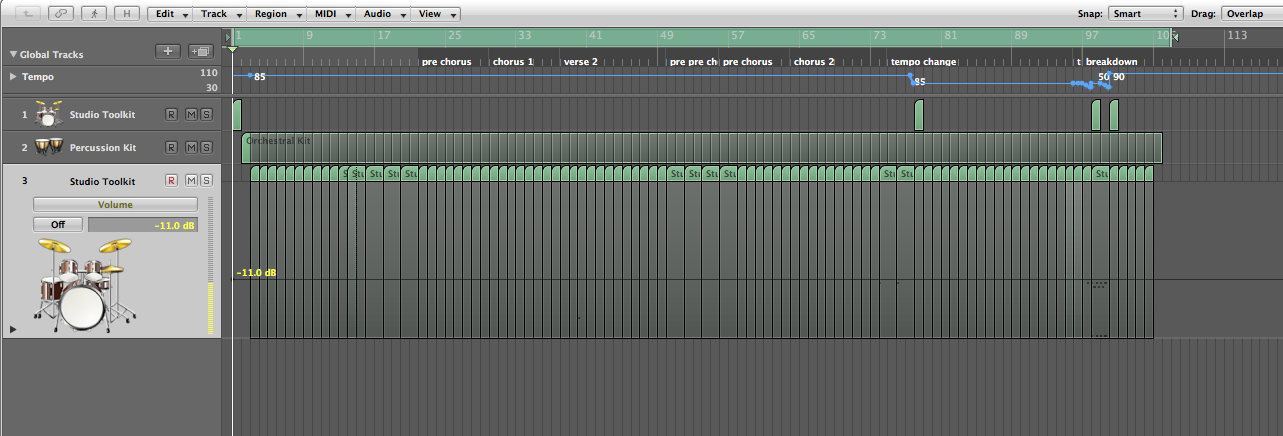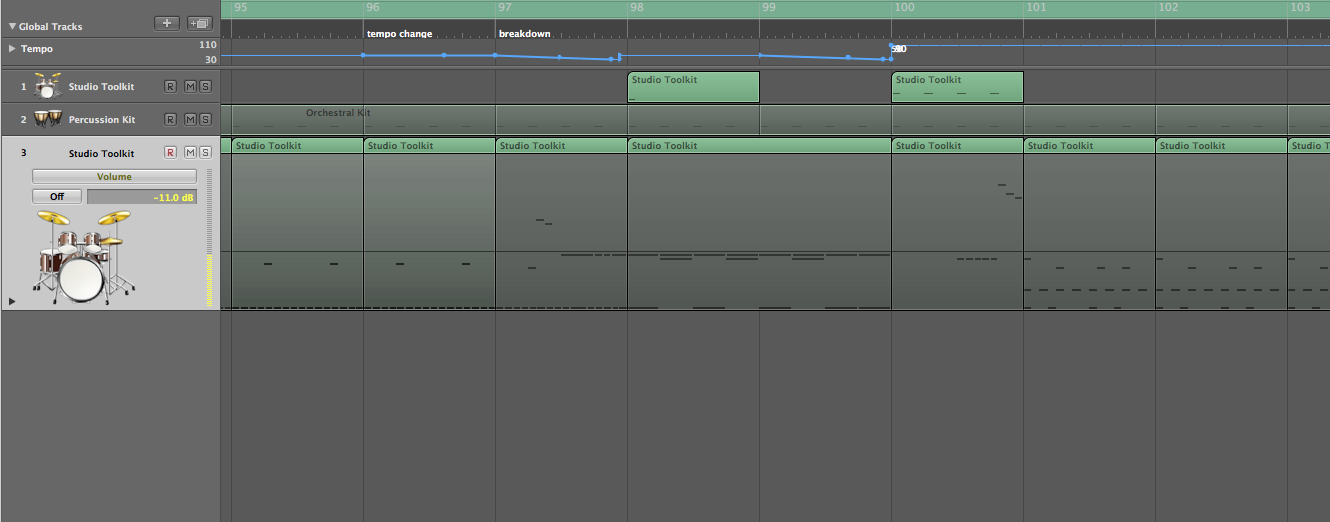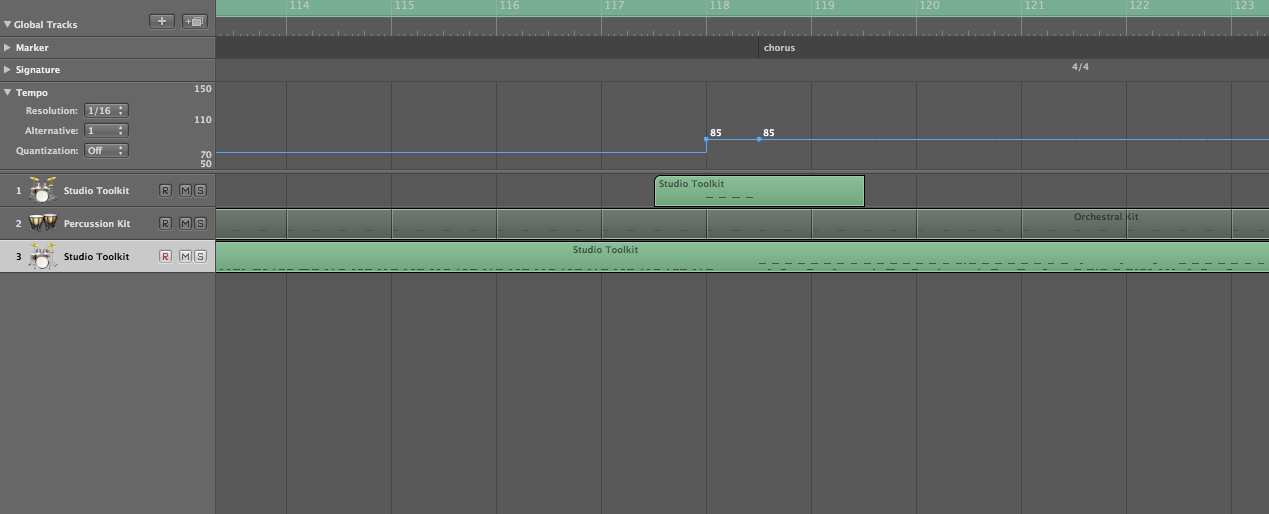As our two songs for the EP have changing tempos and time signatures, it would be very difficult and time-consuming to just play to a normal metronome. If we decided to do this, we would have to record each tempo and time signature separately and mix them together. To avoid this, I have made tempo maps for both the songs. A tempo map is basically a set metronome that has different tempos within it at planned intervals. I made these tempo maps from memory, singing the songs in my head and writing the tempo maps as I went along.

This is a screenshot of the full tempo map for Bad Habit. As you can see, the tempo stays relatively the same throughout. It is only when you get towards the end of the song that the tempo starts to change. Below is a more in-depth look at the different changes in the tempo map.

The first aspect of the tempo map is the count in. I made a count in of four beats to lead me into the song to make sure that I come in on the correct beat. I chose to make this count in hi-hat hits. This was so that it would stand out from the actual click track so I would get confused on when I was supposed to come in. To make the click track, I had an automated cowbell hit on every beat of the bar. This was so it was perfectly on the beat and it was easy for me to edit. I also wanted a specific sound for the click track. In the past, I had struggled to hear the metronome and therefore wanted a definitive sound for the click so that it would stand out and I would definitely be able to hear it.

In addition to this, I also programmed my drum parts on the tempo map so that I could listen to my own parts to familiarise myself with them. Another reason for doing this was so that I could play along to them on my own. I have always found it easy to play along to a recording of the drums. Doing this ensures that I will be as tight with my own playing as I possibly can be, and also that I have definitive parts that I won’t need to improvise when it comes to recording in the studio.

This photo shows how the tempo changes from 85 to 50 for the quiet section. It is a gradual change over two crotchets so that it isn’t as sudden. On top of this, I added a crash cymbal when the tempo is solid to signify me of the change.

This is a documentation of the tempo performing a rallentando from 50 to 30, then back up to 50 for the breakdown section, back down to 30, then up to 90 for the ending section. This gives the music a more flowing and free feel instead of it jumping from tempo to tempo. It also allows me to build more suspense on the drums by washing on the cymbals before the tempo shoots back up.
Below is an explanation of the tempo maps for Smackhead.

The intro for Smackhead is in 3/4 with a bar of 2/4 every 7 bars. This would have been possible to do with a normal metronome, but it wouldn’t have been possible to have the accents on every first beat of the bar. The accents were necessary to have as our guitarist isn’t as comfortable or used to playing with click tracks as I am. He finds it difficult to count beats and play at the same time. Therefore, having bars of 2/4 with the accents on the first beats was very effective.
The tempo for the intro is 125 bpm. When the time signature changes to 4/4 for the second intro, the BPM drops to 85. At the start of both of these sections, I have included a count in. This is so that I and my other bandmates are aware of the different section and tempo changes. At the start of intro one, I have included two bars of 3/4 as a count in. This was because there is a count in of one bar before the vocals come in, but a count in of two bars before the guitars come in. Making it like this was the most effective way of making the tempo map so that nobody was confused.

For the breakdown section of the song, the tempo drops to 75 bpm and stays at this until the final chorus.

For the final chorus, the BPM jumps back up to 85 BPM to make it a more effective transition. I have also included a count in of four beats to signify me of the tempo change and so that I know exactly what tempo the new section will be.
One strength of this process was the accuracy and attention to detail of my tempo maps. I put a lot of effort into these maps and it shows in how much detail was in each of the tracks. They were very easy to follow and effective in giving a solid metronome to play along to.
One weakness was that I should’ve used these maps to make a full ghost track to aid in my pre-production. It took me a while to create these as I was doing them from memory. It would have been a lot easier to record each separate section with the full band, then piece that into an accurate and effective tempo map.
Overall, I am happy with these maps and think they will do the job just fine when it comes to recording in the studio, they are easy to follow and easy to hear. If I were to make these again in the future, I would start by getting a recording of each section first, then piecing them together and turning that into the tempo map. This would save a considerate amount of time when producing these.
